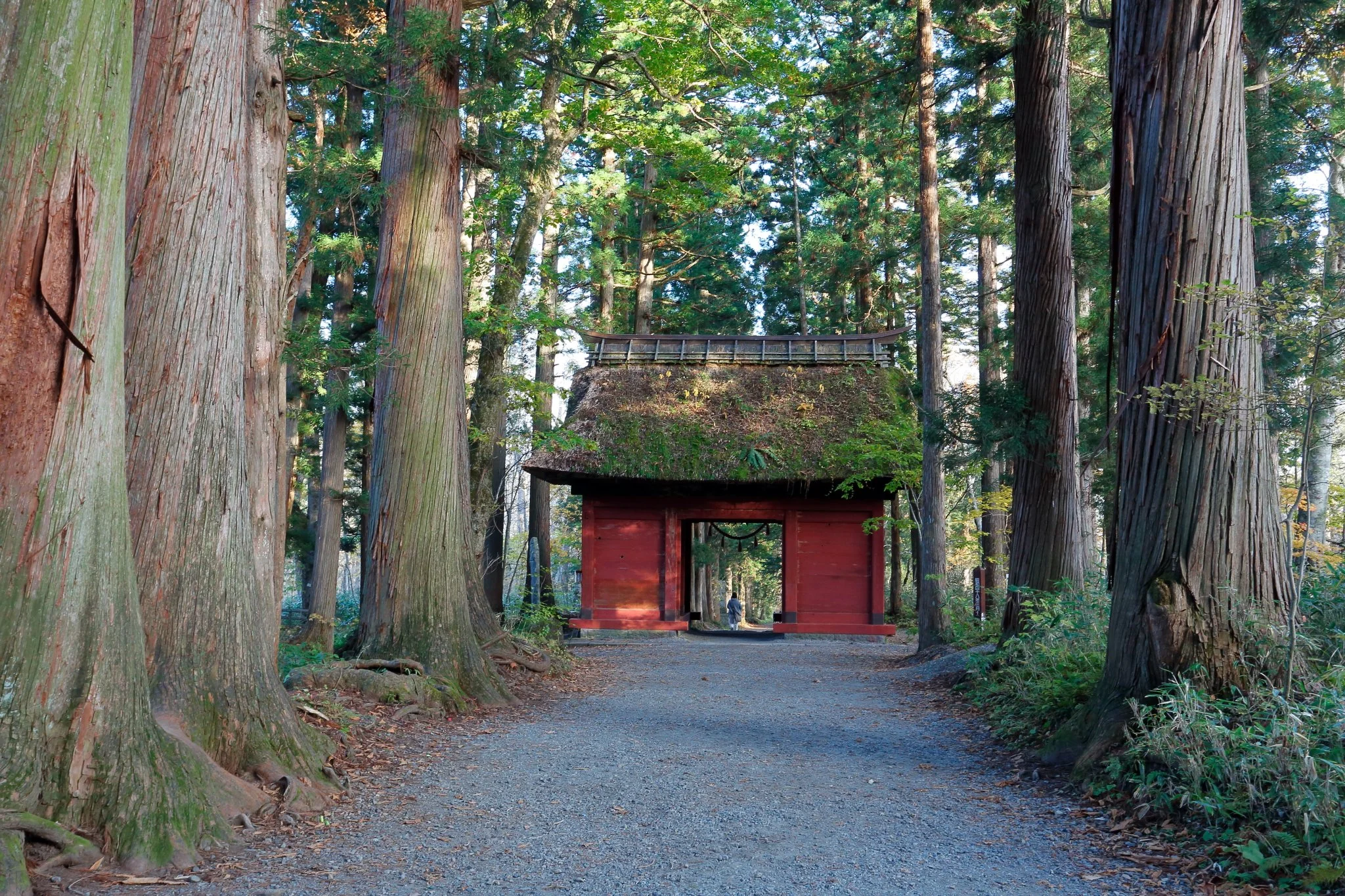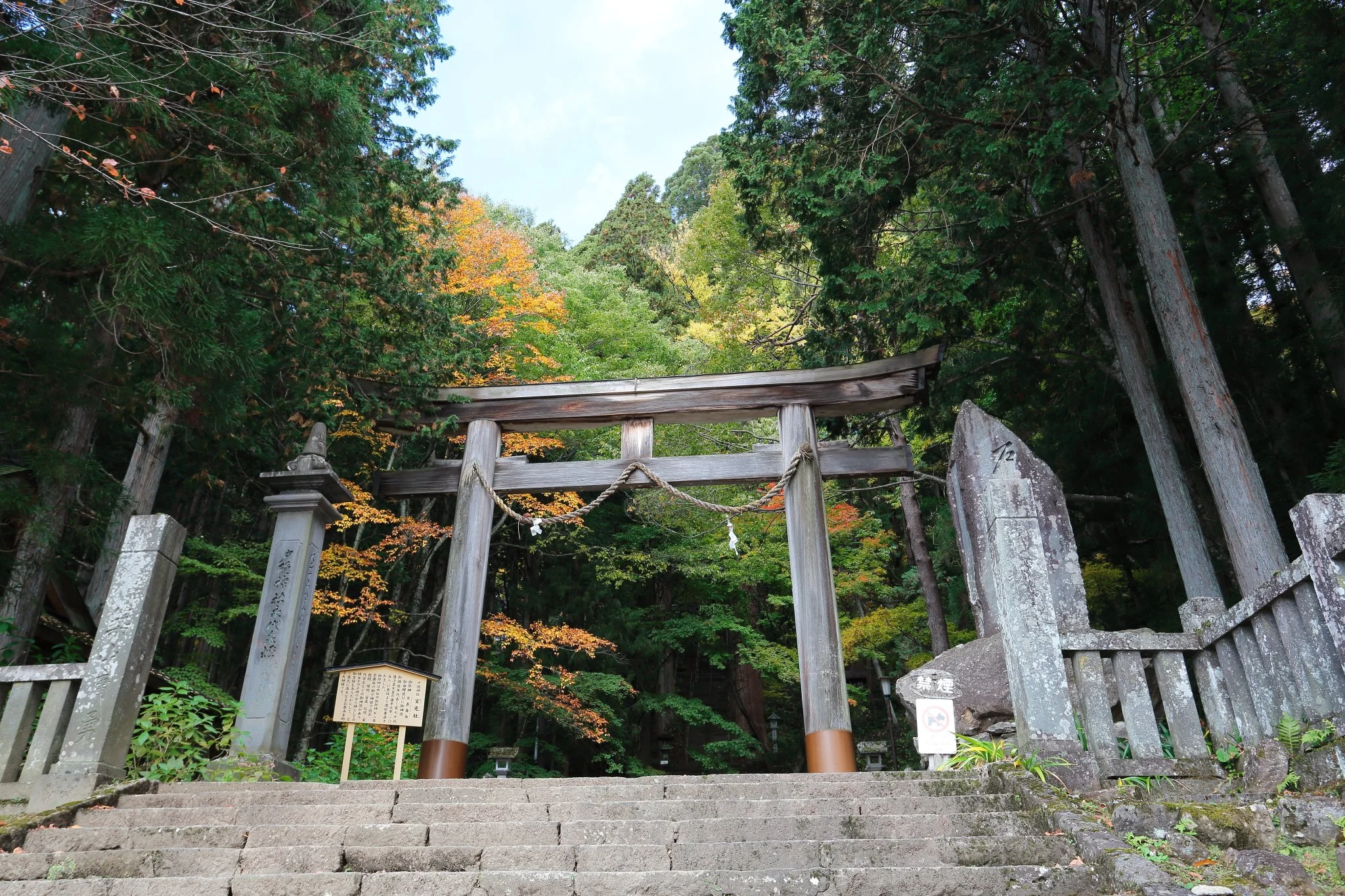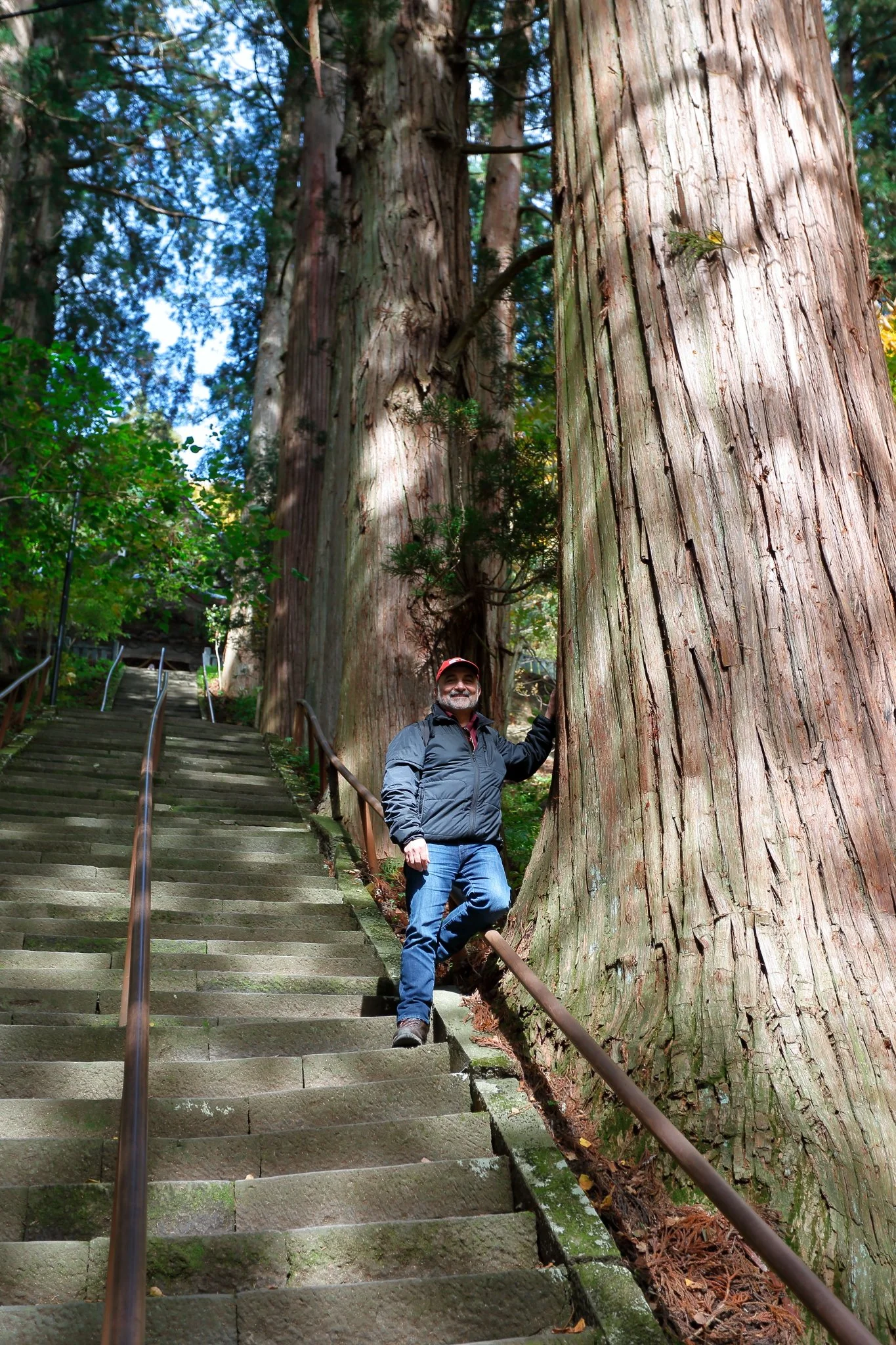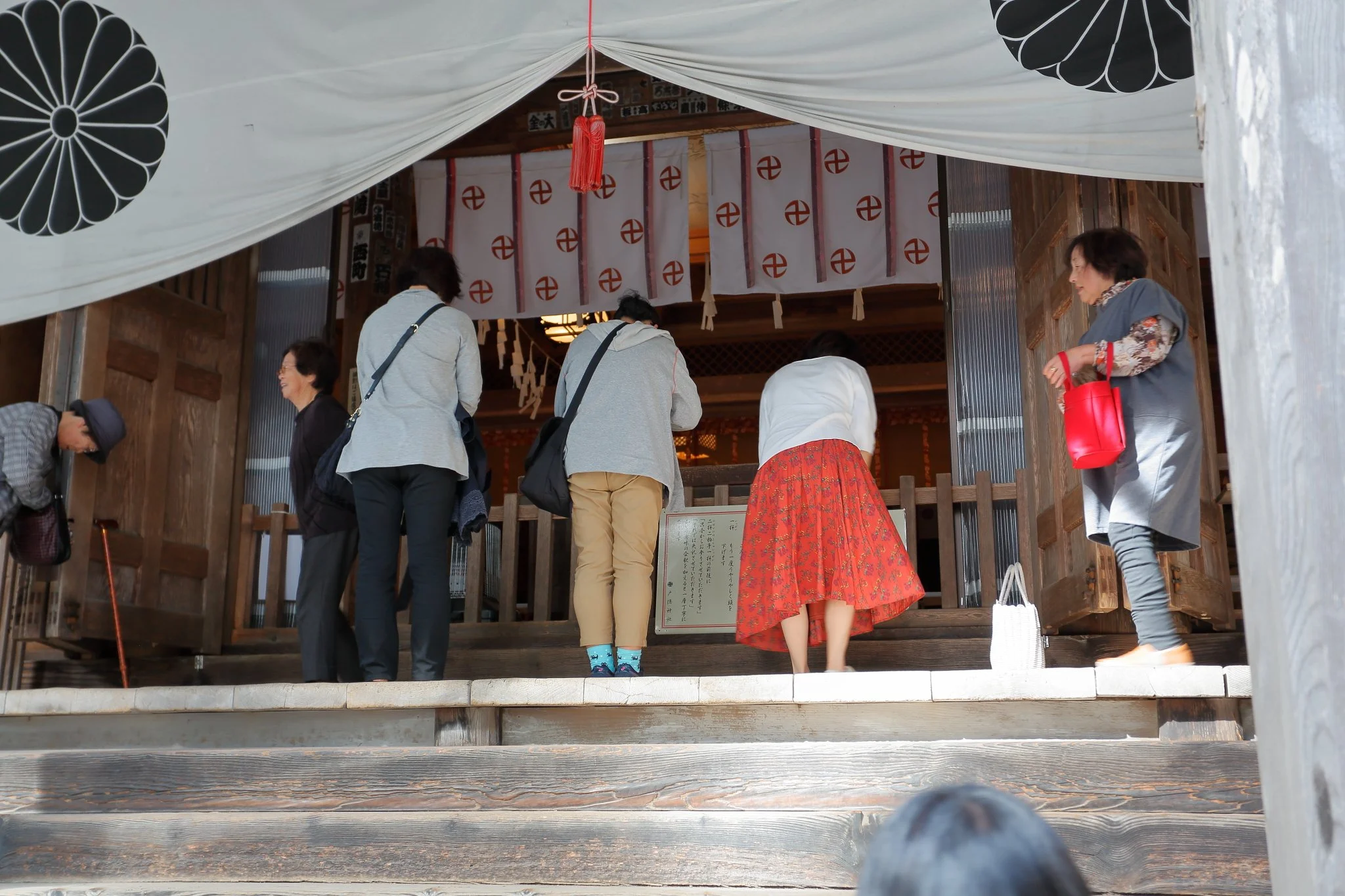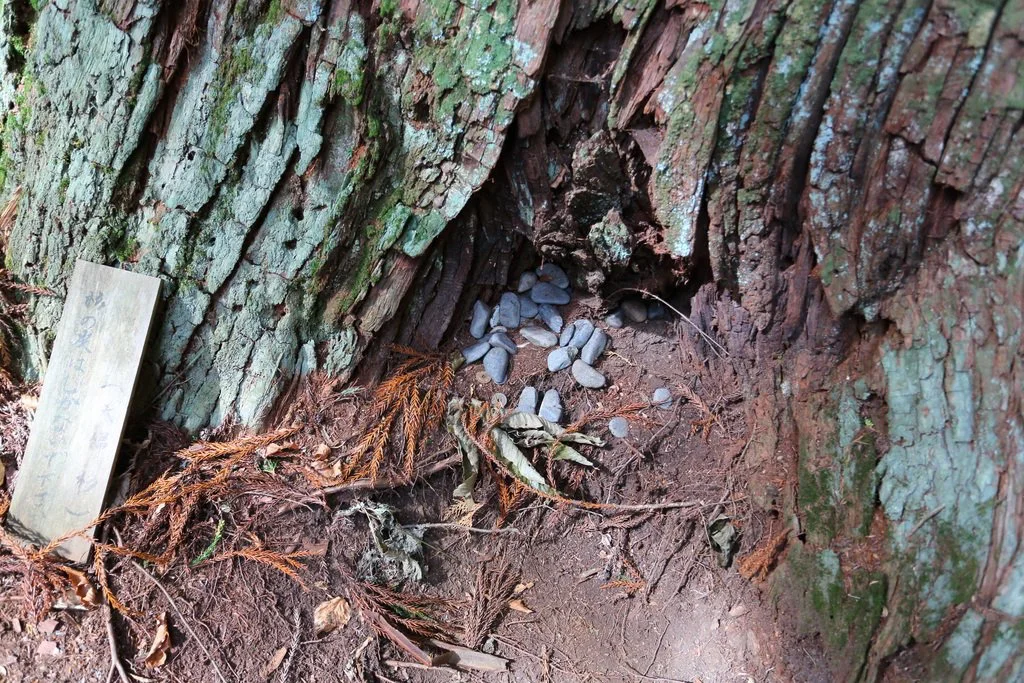Nagano - Temple, Shrines and giant trees - Part 2
The pilgrimage route through the Togakushi shrines is located in the forested mountains northwest of Nagano. Togakushi is considered to be a spiritual mountain with five shrines along the trail, each representing a different God character from the mythological story of Japan’s creation.
The 3 main shrines in Togakushi, a lower, a middle and upper one, are connected by a few kilometres of forested trail and steep stone stairways lined with giant Japanese cedars.
Considered to be a “power place” this area has a series of marked sacred places. These markers are called shimenawa made of a rice straw or hemp rope called nawa, and shide or gohei, origami type of figures made with white paper that are cut into strips and hung from these ropes. You find these at the entrances of holy places, they are also placed around trees to indicate the presence of kami (Shintō deity). By the way, look at the size of the Japanese Cedar in the photo below, sacred history in itself…
Traditional prayer routine
When you approach a Shinto shrine, there are no fancy decorations of gold or statues to venerate, normally you see an enclosure in the far back with closed doors. Shrines rather specialize in spirits, sacred incantations, and talismans. So, to pray to the spirits or Kami in that particular shrine, walk right up to the barrier in front of the main hall, there is normally a large wooden box with wooden slots where you can make an offering (100 yen is the typical amount offered). Then the protocol is, bow twice, clap your hands twice, now this is the time to pause and pray with your hands together, when done, bow once more.
I spent most of my time hugging these magnificent giant cedars, even though I did the water purification and prayer in each shrine too.
One of the things we do during our Forest Bathing session in Germany is to place a stone at the base of a tree as a form of an offering. I was very pleased to see that our “own” idea has been practiced in Japan for decades. Maybe the meaning is slightly different but in essence it is an offering to the tree.
Along the way to the last or upper Shrine, Okusha, the path is lined by ancient cedar trees that radiate such a spiritual feeling from such majestic nature. You walk along in fascination and awe. This is a very healing feeling in Shinrin Yoku terms.
And finally, the last Shrine, a very beautiful place high up at the base of the sacred mountain.
The wooden tablet above, is called "ema", the tradition is that you write down a wish and place it in a box in the Shrine to be later presented to the Shintō deity of that Shrine. (Thank you Naoko for the pictures you took of me)

